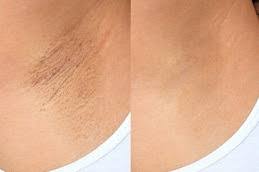
Dark Underarm Treatments:
Dark underarms might cause self-consciousness and pain all the time. Wearing swimsuits or sleeveless clothing makes this especially true. It is usually brought on by simple activities like shaving, rubbing, using harsh deodorants, etc. But hormonal abnormalities or some skin disorders might also result in darker underarms. With the correct medications, it is entirely treatable, which is good news. Before delving into effective remedies for dark underarms, let’s review the fundamentals.
Reasons for Dark Arms
As you may already be aware, melanocytes—basically, the cells in your body that produce pigment—determine the color of your skin. The skin eventually becomes darker as a result of these cells proliferating. Melanocytes are the main cause of dark underarms, as you might have expected.
Dark underarms are generally more common in those with darker skin. Genetics also contributes. Acanthosis nigricans (AN), a disorder that frequently results in black underarms, can run in families. The risk may be raised by a defective gene passed down from a parent or close relative. Skin irritation can result from hair removal techniques like shaving or plucking. Darkening may result from this overproduction of melanocytes.
Obese or overweight people are typically more likely to have dark underarms. Their insulin resistance is high. Dark patches may result from melanocyte activity being stimulated by high insulin levels. Thus, black underarms are also more common in patients with type 2 diabetes.
Dark underarms are more common among obese people with diseases such Type 2 Diabetes, PCOS, Cushing Syndrome, Acromegaly, and Hypothyroidism. Because skin darkens as a result of all the disorders that alter insulin or hormone levels. The likelihood of dark underarms is also increased by certain drugs that raise insulin levels, such as corticosteroids, birth control pills, and high-dose niacin.
Advice for Avoiding Dark Underarms
The following practical advice will help you prevent dark underarms at home:
How to Treat Dark Underarms
The following are a few methods for treating dark underarms:
Changes in lifestyle
Because it lessens friction and skin creases, losing extra weight can help the disease. Losing weight can also help avoid or control diabetes, which may be a factor in underarm skin pigmentation problems. For individualized diet and exercise plans to reach a healthy weight, speak with a nutritionist. Consult your physician about other choices if you believe that a drug you’re taking is the cause of your dark underarms. Changing to a different medicine could resolve the problem.
Natural Solutions
In order to lighten pigmented skin, some natural therapies are frequently recommended. These consist of milk thistle extract, curcumin, and sea cucumber extracts.
Procedures in Dermatology
1. Peels of chemicals
Exfoliating acids are used in chemical peels to eliminate the outermost layer of pigmented, damaged skin. For example, water-soluble acids called AHAs (such as lactic acid and glycolic acid) target the skin’s surface, encouraging cell turnover and exposing lighter, smoother skin beneath. AHAs are perfect for delicate areas like the underarms because they moisturize the skin as well. Likewise, BHAs (like salicylic acid) are oil-soluble acids that enter the pores more deeply and eliminate extra sebum and debris. BHAs are particularly helpful if darkening is linked to acne or congested pores. Frequent treatments enhance general skin texture and help balance out skin tone.
The excess melanin in the skin, which causes pigmentation, is targeted and broken down by laser treatments. Without causing harm to the surrounding skin, laser therapy successfully removes black spots by employing particular light wavelengths. Additionally, it encourages skin regeneration and collagen synthesis, both of which can improve the underarm region’s appearance. For obstinate pigmentation that doesn’t go away with topical treatments or exfoliation, laser therapy is especially helpful.
To guarantee safety and the best possible outcomes, a dermatologist should supervise the administration of each of these treatments.